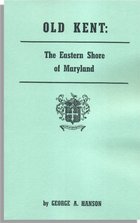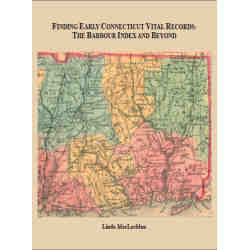
[av_image src=’https://genealogical.com/wp-content/uploads/2018/07/9780806361888-223×300.jpg’ attachment=’5135′ attachment_size=’medium’ align=’right’ styling=” hover=’av-hover-grow’ link=’manually,https://library.genealogical.com/printpurchase/Xe1kX’ target=’_blank’ caption=’yes’ font_size=” appearance=’on-hover’ overlay_opacity=’0.4′ overlay_color=’#000000′ overlay_text_color=’#ffffff’ animation=’no-animation’ admin_preview_bg=” av_uid=’av-pk8ym’]
View Unpuzzling Your Past. 4th Edition
[/av_image]
(The following article has been excerpted from Emily Anne Croom’s classic how-to book, Unpuzzling Your Past. 4th Edition)
The 1880, 1900, and 1920 federal censuses and parts of the 1910 and 1930 censuses are indexed by state using a code based on the sounds in surnames. This indexing system is called Soundex. It is most often available as microfilm of the cards on which basic census information was written . . . . The Soundex is especially useful when you do not know specifically where the family was living in the census year. It will tell you their county and community and where you can find them on the census.
One drawback of the 1880 Soundex is that it includes only households with children age ten and under. If Great-Grandpa’s children were already over age ten by 1880, you cannot find him in the Soundex unless he lived with a family that included young children.
[av_image src=’https://genealogical.com/wp-content/uploads/2018/07/image1.jpg’ attachment=’5136′ attachment_size=’full’ align=’center’ styling=” hover=” link=” target=” caption=” font_size=” appearance=” overlay_opacity=’0.4′ overlay_color=’#000000′ overlay_text_color=’#ffffff’ animation=’no-animation’ admin_preview_bg=” av_uid=’av-iuwou’][/av_image]
The Soundex Code
The Soundex coding system groups letters by the way they sound. Similar letters have the same code to account for spelling variations. In this way, the names Al(l)en, Al(l)an, Allene, Alleyne, Al(l)ain, Allien, Allyn, and other variants all have the same code: A450. However, other names with the same code would include names with the same group of letters: Almy, Alwin(e), and Allum. Even such dissimilar names as Carpenter, Corbin, Craven(s), Cherrybone, and Cherubini all have the same code number (C615) and appear together in the Soundex.
The code begins with the first letter of the surname. For the remaining letters, cross out all vowels (a, e, i, o, u) and y, w and h. With the remaining consonants, form a three-digit code. Code as one digit any double letters, such as tt, or rr, or consonants with the same code that occur together in a name, such as ck or sc. If you run out of key letters before you have the required three digits, simply add one or more zeros. Practice coding your own family names. (See examples below.)
[av_image src=’https://genealogical.com/wp-content/uploads/2018/07/image2.jpg’ attachment=’5137′ attachment_size=’full’ align=’center’ styling=” hover=” link=” target=” caption=” font_size=” appearance=” overlay_opacity=’0.4′ overlay_color=’#000000′ overlay_text_color=’#ffffff’ animation=’no-animation’ admin_preview_bg=” av_uid=’av-4a5vmm’][/av_image]
Some census entries show the surname written incorrectly, spelled with C instead of K, minus the final syllable, spelled with an added final e or s, spelled phonetically instead of correctly, or misunderstood for another name entirely. If your research names can have several spellings (and most can), code the usual variations and look for them all in the Soundex or other index. Soundex codes that are almost the same, such as 450 or 452, are often grouped together as “mixed codes.” Sometimes prefixes such as von, van, de, de la, and le are omitted in coding. Be aware that some names and their common variations will have different Soundex codes because of different initial consonants or subtle changes in spelling, as in the chart examples below.
Examples of Soundex Problems
Names that are similar, with different initial letters:
[av_image src=’https://genealogical.com/wp-content/uploads/2018/07/image3.jpg’ attachment=’5138′ attachment_size=’full’ align=’center’ styling=” hover=” link=” target=” caption=” font_size=” appearance=” overlay_opacity=’0.4′ overlay_color=’#000000′ overlay_text_color=’#ffffff’ animation=’no-animation’ admin_preview_bg=” av_uid=’av-2smsmm’][/av_image]
When you determine the Soundex code that applies to your focus family and any variant spelling that may send you to a different code, you are ready to get the microfilm. You would choose for Gardner, for example, the 1920 Soundex for Kansas for G635 (year, state, code).
When you find the family on the Soundex microfilm, write down these references to your family in the census itself: the county (you already know the state), enumeration district, page (sheet), and line number that begins the family listing.
You can also start your extraction of the information, as the household members, relationships, and ages are normally given on the Soundex cards. With this done, you can move to the census microfilm. Reading the Soundex does not take the place of reading the census; the Soundex gives only partial information.




